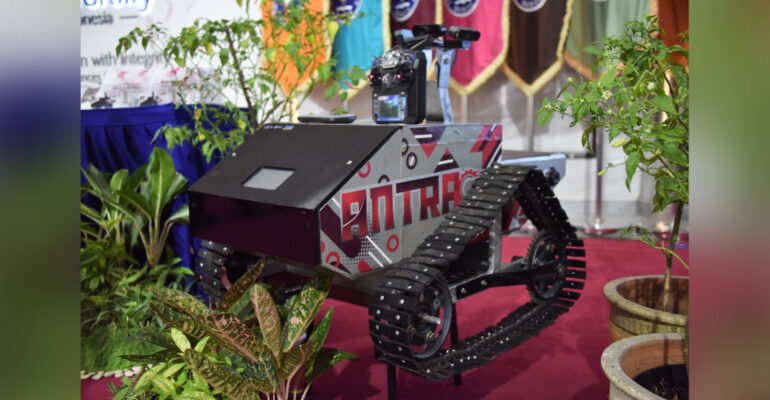IPB University Researcher Develops AI-Based Smart Robot to Detect Anthracnose Disease in Chili Peppers

In an effort to increase agricultural productivity, IPB University researchers and lecturers from the Computer Engineering Study Program, Vocational School Dr Ridwan Siskandar and team have successfully developed an artificial intelligence (AI)-based intelligent robot that can detect anthracnose disease in chili plants.
Anthracnose disease is one of the biggest challenges faced by chili farmers in Indonesia, which can result in significant losses if not handled quickly. This innovation is expected to be an effective solution in maintaining plant health and increasing yields.
At the IPB Innovation 2025 Launching event at Dramaga Campus, Wednesday 14th May, Dr Ridwan revealed that the robot he developed is equipped with computer vision technology that allows visual scanning of chili plants.
“By using machine learning algorithm, the robot can analyze images and recognize the early symptoms of anthracnose disease, such as black spots on the fruit. This fast and accurate detection process allows farmers to immediately take preventive measures before the disease spreads more widely,” he explained.
In the testing phase, Dr Ridwan continued, the robot showed a high level of accuracy in detecting diseases. He stated that the robot can operate on the farm through remote control, reducing the need for manual labor.
This is not only efficient, but also allows farmers to focus more on other aspects of their farm management. Thus, it is expected that the productivity of chili farming can increase significantly.
“This intelligent robot is also equipped with a skid steering model, which allows for more flexible and efficient maneuvering in various types of agricultural terrain,” explained Dr Ridwan.
The skid steering system allows the robot to turn more sharply and move in narrow spaces, so it can reach areas that are difficult to access by large vehicles. With this capability, the robot can perform anthracnose disease scanning and detection more effectively throughout the farm, without damaging the plants or soil.
The advantage of this skid steering model also lies in its ability to adapt to various land conditions, both flat and hilly. This makes the robot more reliable in carrying out its duties, especially in farmlands that often have varying contours.
“With this design, we hope the robot can operate optimally, increase efficiency in disease detection and support the sustainability of chili farming in Indonesia,” he hoped.
In addition, he continued, the development of this robot is also in line with the government’s efforts to encourage the adoption of technology in the agricultural sector. Through innovative programs like this, it is hoped that farmers can more easily access technology that can help them overcome various challenges in the field.
According to him, this intelligent robot is a clear example of how technology can play an important role in supporting national food security. The successful development of this disease detection robot is expected to pave the way for further research in precision agriculture.
“We plan to collaborate with various parties, including farmers and industries, to implement this technology widely. By promoting innovation, we hope to reduce the negative impact of plant diseases and improve the welfare of farmers,” said Dr Ridwan.
This innovation was produced through the Vocational Applied Research Grant funding from the Ministry of Education, Culture, Research, and Technology in 2024. Along the way, he collaborated with the Farmer Group Association (Gapoktan) of Cibitung Wetan Village, Pamijahan District, Bogor and CV Benih Dramaga as partners.
Seeing its potential, this smart robot will not only benefit chili farmers, but also become a new hope for Indonesia’s agricultural sector as a whole. Innovations like this prove that with the combination of technology and knowledge, he and his team believe they can face the challenges of modern agriculture and create a better future for farmers and consumers. (IAAS/PRP)



